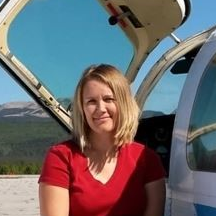LiDAR Remote Sensing of Forest Resources
A special issue of Forests (ISSN 1999-4907).
Deadline for manuscript submissions: closed (15 September 2016) | Viewed by 47388
Special Issue Editors
Interests: airborne and terrestrial LiDAR; forest resources; change detection; water resources
Interests: time-series airborne lidar remote sensing; ecosystem change; boreal ecosystems; peatlands; permafrost thaw; biomass; carbon dioxide fluxes; hydro-meteorology Photo attached
Special Issues, Collections and Topics in MDPI journals
Special Issue Information
Dear Colleagues,
The field of LiDAR remote sensing of forest resources originated in 1980s and 1990s with low-resolution, large footprint sensors. For the last 20 years, commercial mapping sensors have been available to provide comparatively high-resolution discrete return sampling of canopy structure, and during this period techniques to exploit the 3D nature of these data structures have proliferated. From 2003 to 2010, ICESat (Ice, Cloud, and land Elevation Satellite)’s Geoscience Laser Altimeter System provided orbital LiDAR coverage of forest environments, allowing the construction of global forest products; work that is anticipated to continue with new missions, such as ICESat II and GEDI (Global Ecosystem Dynamics Investigation). During the last decade, terrestrial sensors have complimented the overviews provided by airborne and satellite data by providing within-canopy observations of fine structural elements down to foliage element level. Within the last year, we have witnessed something of a paradigm shift in this field, with the availability of multi-channel sensors that allow for combined active multi-spectral and geometric representation of canopy environments from a single sensor. Consequently, LiDAR is, in many ways, a mainstream technology in remote sensing forest attribute mapping, while in others new techniques and data products are emerging or yet to be developed.
Meanwhile, and in addition to the obvious commercial values presented by forests environments, the growing realisation that forests are critical and threatened elements in our global ecosystem is evident in the many national and international initiatives directed at sustainable forest management and conservation. Increasingly, we are seeing the emergence of frameworks that value and account for forest attributes, such as Carbon, instead of simply merchantable volume, or ecosystem services instead of just commercial yield. Moreover, we are now at point in time where national ecosystem monitoring networks or observatories are recognising LiDAR’s ability to map and scale critical forest attributes from stem to stand to nation and beyond.
This special issue seeks manuscript submissions that showcase integrative usages of LiDAR technology and data fusion in the pursuit of forest attribute scaling and/or the generation of methods and data products that demonstrate holistic ecosystem classifications and functional assessments. In particular, papers presenting new LiDAR-based Carbon assessment or monitoring methods and/or linkages between forest resources and surrounding terrestrial ecosystem processes are of high interest.
Dr. Chris Hopkinson
Dr. Laura Chasmer
Dr. Craig Mahoney
Guest Editors
Manuscript Submission Information
Manuscripts should be submitted online at www.mdpi.com by registering and logging in to this website. Once you are registered, click here to go to the submission form. Manuscripts can be submitted until the deadline. All submissions that pass pre-check are peer-reviewed. Accepted papers will be published continuously in the journal (as soon as accepted) and will be listed together on the special issue website. Research articles, review articles as well as short communications are invited. For planned papers, a title and short abstract (about 100 words) can be sent to the Editorial Office for announcement on this website.
Submitted manuscripts should not have been published previously, nor be under consideration for publication elsewhere (except conference proceedings papers). All manuscripts are thoroughly refereed through a single-blind peer-review process. A guide for authors and other relevant information for submission of manuscripts is available on the Instructions for Authors page. Forests is an international peer-reviewed open access monthly journal published by MDPI.
Please visit the Instructions for Authors page before submitting a manuscript. The Article Processing Charge (APC) for publication in this open access journal is 2600 CHF (Swiss Francs). Submitted papers should be well formatted and use good English. Authors may use MDPI's English editing service prior to publication or during author revisions.
Keywords
- LiDAR data fusion
- Scaling
- Carbon
- Ecosystem services
- Biomass
- Forest resources
- Sustainable management






